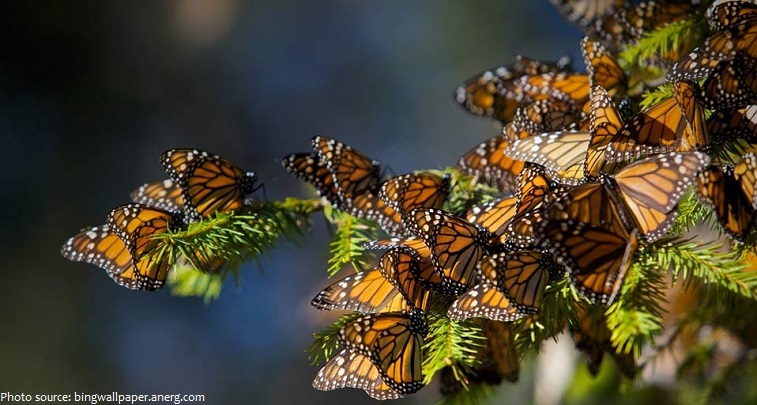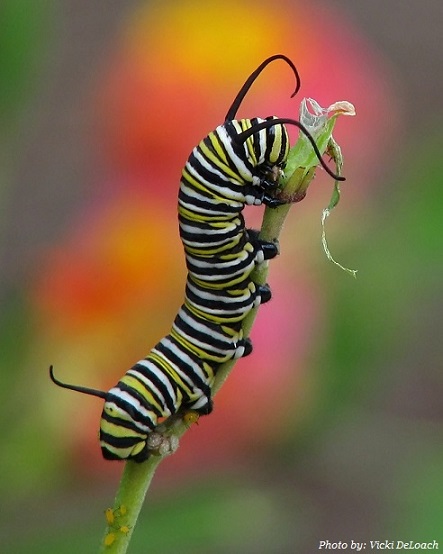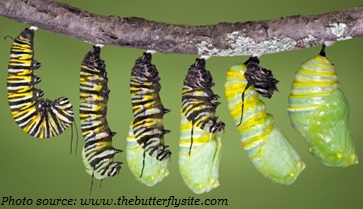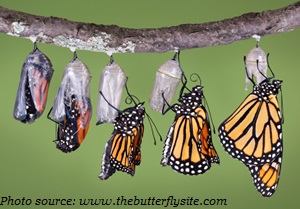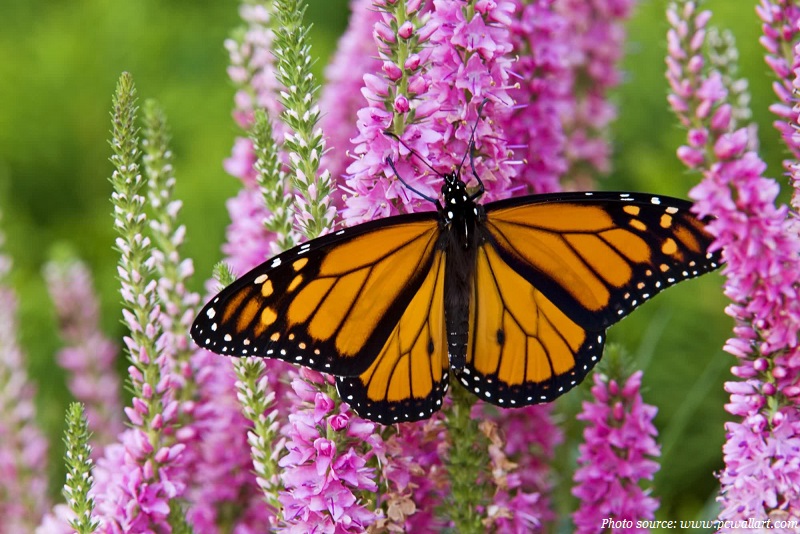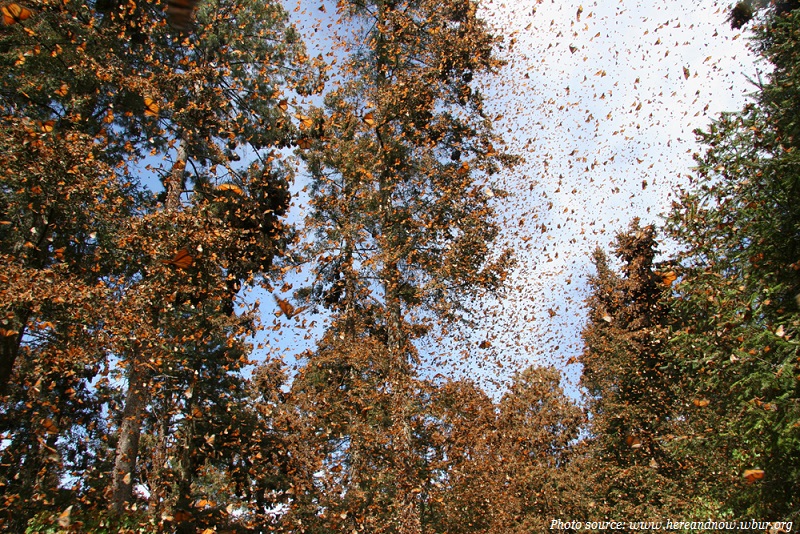The monarch butterflies are large, beautifully colored butterflies that are easy to recognize by their striking orange, black, and white markings.
Monarchs live in North, Central, and South America as well as Australia, some Pacific Islands, Western Europe, and India.
Monarch will lay their eggs on the underside of leaves.
They will lay their eggs only on the milkweed plant.
Eggs will hatch into larva in about four days.
Monarch caterpillars eat only milkweed leaves.
The milkweed that monarch caterpillars eat is poisonous. The poison stays in their bodies so that animals will not eat them.
The monarch’s caterpillar does not have bones. Instead it has over 1,000 muscles helping the caterpillar crawl wherever it needs to go.
In order for the monarch to grow it must shead it’s skin.
The caterpillar stage is two weeks long.
The caterpillar hangs upside down and forms a silk cocoon from it’s old skin.
When the skin fall off, the larva becomes a pupa. The monarch butterfly has no eyes and no antennae. It has no legs, and it cannot move. All of the major changes in body size, shape, and
arrangement happen. In monarchs, this stage can last as long as a week. At the end of this stage, an adult butterfly will emerge from the chrysalis.
When the butterfly comes out of it’s cocoon it hangs upside down to dry it’s wings and make them strong.
The monarch can fly then.
Monarch butterfly eat flower nectar trough their new straw like mouth.
The monarch butterflies has tiny receptors on their feet that they taste with.
The Monarch’s wingspan ranges from 8.9–10.2 cm (3½–4 in.).
The uppersides of the wings are tawny orange, the veins and margins are black, and there are two series of small white spots in the margins. Monarch forewings also have a few orange spots near their tips. Wing undersides are similar, but the tips of forewings and hindwings are yellow brown instead of tawny orange and the white spots are larger. The shape and color of the wings change at the beginning of the migration and appear redder and more elongated than later migrants.
Male monarch butterflies have a black spot on a vein on each hind wing. Females have no spots on this vein.
Monarch butterflies are known for the incredible mass migration that brings millions of them to California and Mexico each winter. North American monarchs are the only butterflies that make such a massive journey— up to 5,000 km (3,100 mile).
Monarch’s can travel between 80-160 km (50-100 miles) a day; it can take up to two months to complete their journey to winter habitats.
Monarch flight has been described as “slow and sailing”. Monarch flight speed has been estimated by a number of researchers. One scientist examined all prior estimates and concluded their flight speed is approximately 9 km/h (5.5 mph).
Monarch’s are one of the few insects capable of making trans-Atlantic crossings.
